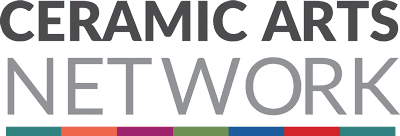-
 Double-Walled Chopstix BowlsThese forms hold a robust volume inside, and when microwaved, the interior will heat up, while the air between the inside and outside walls allows the exterior to remain cool.
Double-Walled Chopstix BowlsThese forms hold a robust volume inside, and when microwaved, the interior will heat up, while the air between the inside and outside walls allows the exterior to remain cool. -
 Slab-Handled BucketsI strive to meld color, sturdiness, earth tones, histories, and fun together in my work. The handled forms I make—bowls, buckets, trays, platters, and baskets—fulfill my desire to mash up these variables into forms that feel vaguely familiar.
Slab-Handled BucketsI strive to meld color, sturdiness, earth tones, histories, and fun together in my work. The handled forms I make—bowls, buckets, trays, platters, and baskets—fulfill my desire to mash up these variables into forms that feel vaguely familiar. -
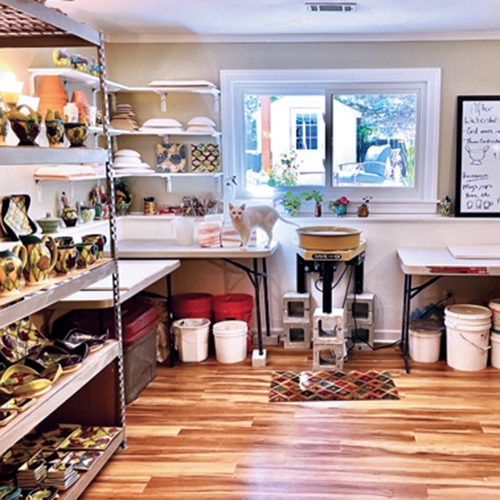 Going Green: Solar-Powered FiringBased on 2021 data, 60% of electricity in the US is sourced from fossil fuels (mainly coal and natural gas). Another 20% is from nuclear power, so only 20% of electricity actually comes from renewable sources, such as wind and solar.
Going Green: Solar-Powered FiringBased on 2021 data, 60% of electricity in the US is sourced from fossil fuels (mainly coal and natural gas). Another 20% is from nuclear power, so only 20% of electricity actually comes from renewable sources, such as wind and solar. -
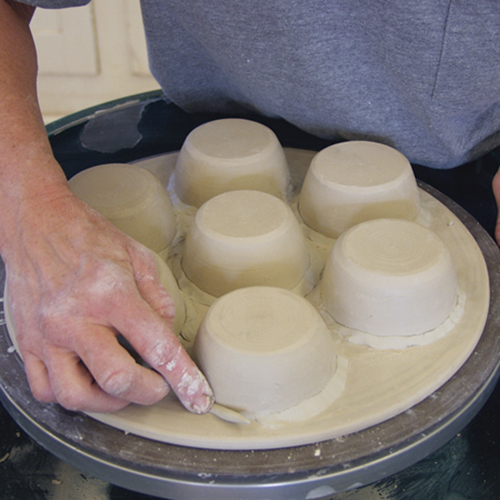 In the Studio: Muffin PanMaking a muffin pan out of clay can be complicated, but it’s also fun, good practice, and an attention-getter.
In the Studio: Muffin PanMaking a muffin pan out of clay can be complicated, but it’s also fun, good practice, and an attention-getter. -
 In the Studio: TagineThe tagine, an iconic vessel synonymous with Moroccan cooking, has a distinctively conical lid.
In the Studio: TagineThe tagine, an iconic vessel synonymous with Moroccan cooking, has a distinctively conical lid. -
 In the Studio: Fluted-Rim Bundt PanPerhaps because of the conical center opening it just doesn’t occur to a lot of potters to try this form, but it’s actually surprisingly fun and simple to make.
In the Studio: Fluted-Rim Bundt PanPerhaps because of the conical center opening it just doesn’t occur to a lot of potters to try this form, but it’s actually surprisingly fun and simple to make. -
 In the Studio: Pottery Studio in a Rental HomeRegardless of the phase in your pottery journey, space is crucial when making a home studio. Let’s look at what factors you need to consider when setting up a studio space in a home that you rent or a space that you are considering renting.
In the Studio: Pottery Studio in a Rental HomeRegardless of the phase in your pottery journey, space is crucial when making a home studio. Let’s look at what factors you need to consider when setting up a studio space in a home that you rent or a space that you are considering renting. -
 Editor's Note: Sparking InspirationOur mission at PMI is to introduce readers to new concepts in forming and firing; to expose up-and-coming artists to fellow ceramic enthusiasts; and to engage makers in a more thoughtful and creative studio practice.
Editor's Note: Sparking InspirationOur mission at PMI is to introduce readers to new concepts in forming and firing; to expose up-and-coming artists to fellow ceramic enthusiasts; and to engage makers in a more thoughtful and creative studio practice. -
 Supporters of Pottery Making Illustrated - Sept/Oct 2022
Supporters of Pottery Making Illustrated - Sept/Oct 2022 -
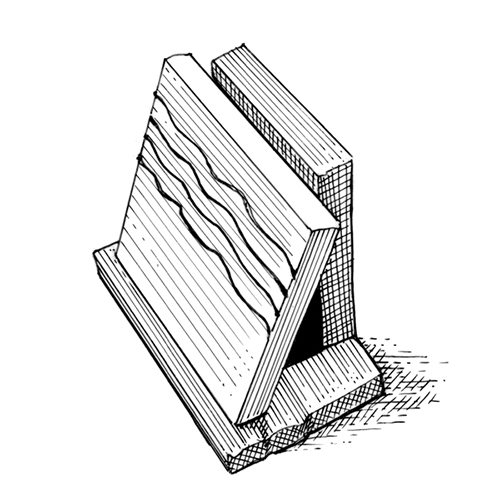 Pottery Illustrated: Test TilesIllustrations of test tiles.
Pottery Illustrated: Test TilesIllustrations of test tiles. -
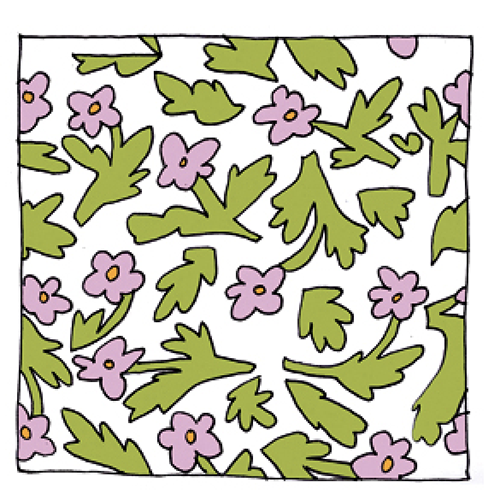 In the Potter's Kitchen: Building Surface PatternThere is no perfect formula for composing a great piece, but I have developed some reliable techniques to help with this important piece of the equation. With practice, you will begin to develop your own methods for composing the surfaces of your work.
In the Potter's Kitchen: Building Surface PatternThere is no perfect formula for composing a great piece, but I have developed some reliable techniques to help with this important piece of the equation. With practice, you will begin to develop your own methods for composing the surfaces of your work. -
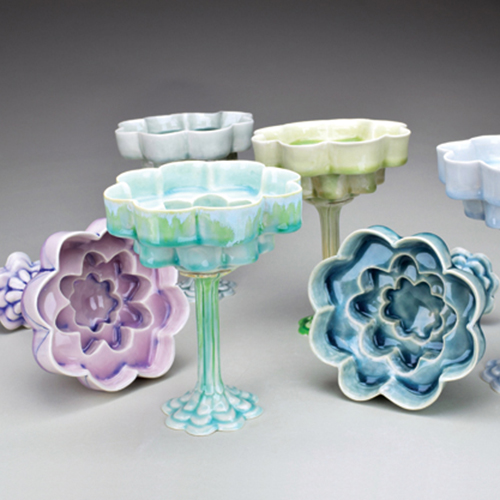 Delicate and Decadent Cocktail CupsMy cocktail cup was designed to feel ceremonial. The cocktail-cup design is true to the themes of repetition found throughout my work, but it allows me to explore a more indulgent form.
Delicate and Decadent Cocktail CupsMy cocktail cup was designed to feel ceremonial. The cocktail-cup design is true to the themes of repetition found throughout my work, but it allows me to explore a more indulgent form. -
 Post-Firing FinishesI find joy in making a clay form and then patterning the surface with glass beads. The process is meditative as well.
Post-Firing FinishesI find joy in making a clay form and then patterning the surface with glass beads. The process is meditative as well. -
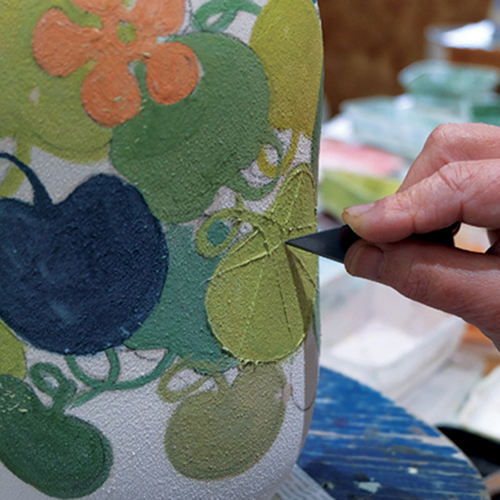 Neo-Majolica PaintingThis life experience has influenced my current ceramics practice. I integrate the vibrancy of majolica ceramics in my work, making use of its wonderful qualities of translucent color integrated into the surface of the glaze.
Neo-Majolica PaintingThis life experience has influenced my current ceramics practice. I integrate the vibrancy of majolica ceramics in my work, making use of its wonderful qualities of translucent color integrated into the surface of the glaze. -
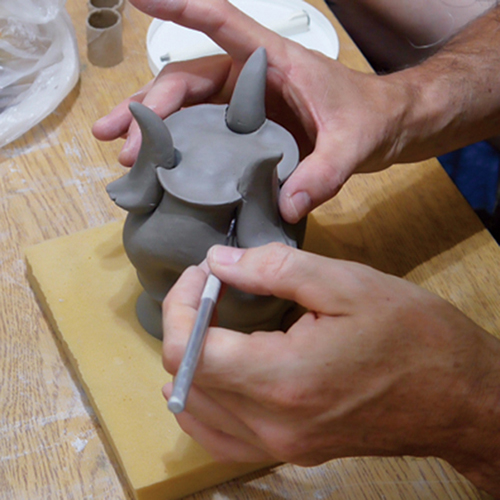 Abstracting From NatureThe wheel has since become an indelible tool in my practice, even after meticulous handbuilding techniques crept into my process. It begins with centering, not only the clay but also my mind, and for that I turn to nature.
Abstracting From NatureThe wheel has since become an indelible tool in my practice, even after meticulous handbuilding techniques crept into my process. It begins with centering, not only the clay but also my mind, and for that I turn to nature. -
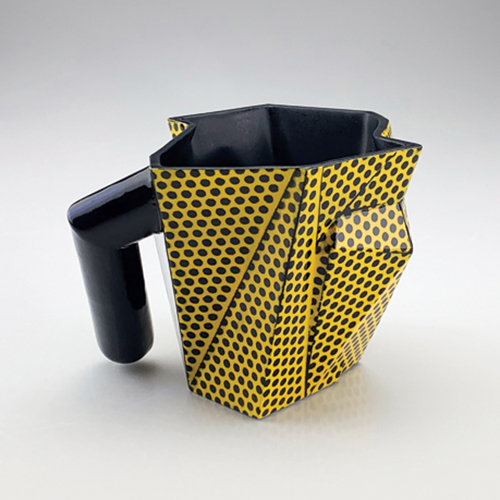 Fractured FabricationLeaving pots behind for a time created room for intellectual and emotional development. When I returned to the vessel, my visual vocabulary had grown; I was a different person.
Fractured FabricationLeaving pots behind for a time created room for intellectual and emotional development. When I returned to the vessel, my visual vocabulary had grown; I was a different person. -
 In the Studio: From Firm to FantasticI soak several small bathroom or kitchen towels in water, then wring them fairly dry. One is folded in half and laid on the table.
In the Studio: From Firm to FantasticI soak several small bathroom or kitchen towels in water, then wring them fairly dry. One is folded in half and laid on the table. -
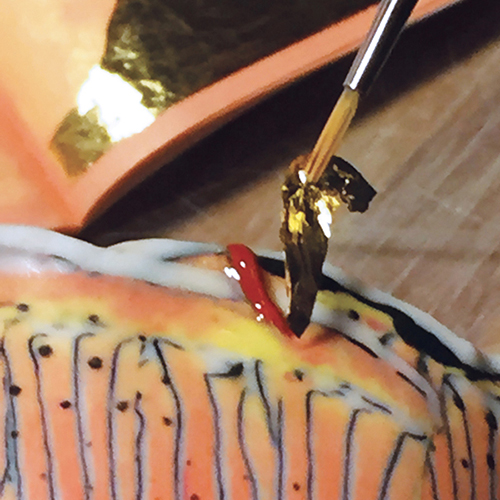 In the Studio: KintsugiYears ago it never occurred to me that those persistent cracks pestering my porcelain could actually be a good thing.
In the Studio: KintsugiYears ago it never occurred to me that those persistent cracks pestering my porcelain could actually be a good thing. -
 In the Studio: Majolica WatercolorThe majolica watercolor technique is very similar to painting a watercolor on paper.
In the Studio: Majolica WatercolorThe majolica watercolor technique is very similar to painting a watercolor on paper. -
 In the Studio: Masking a PlateThe plate is one of my favorite forms. It’s the stalwart workhorse of the kitchen and a key player on the daily tablescape.
In the Studio: Masking a PlateThe plate is one of my favorite forms. It’s the stalwart workhorse of the kitchen and a key player on the daily tablescape.
- «
- 11
- 12
- 13 (current)
- 14
- 15
- 16
- 17
- 18
- 19
- 20
- »
